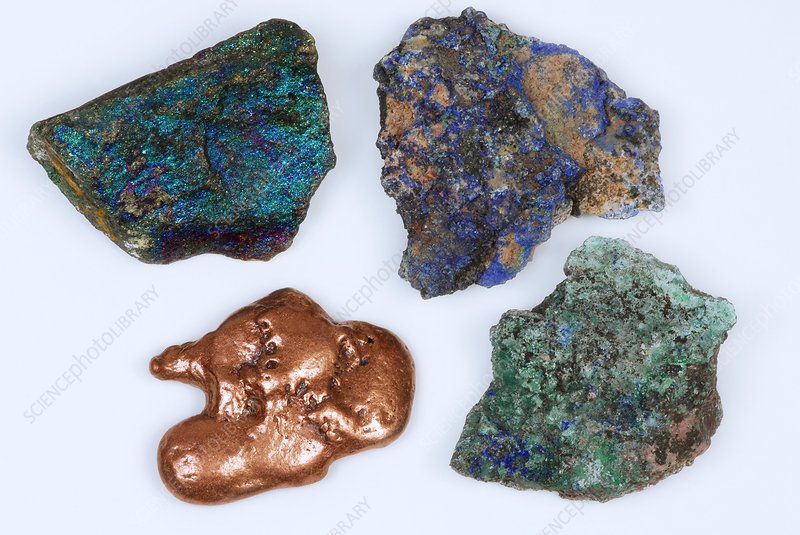Copper Ore vs. Copper Concentrate: Key Differences
Copper is a vital material in various industries, including construction, electronics, and renewable energy. However, it is crucial to understand the difference between copper ore and copper concentrate, as both play distinct roles in the copper supply chain. This blog explores the key differences between these two forms of copper, their characteristics, applications, and their significance in industrial processes.
What is Copper Ore?
Copper ore is a naturally occurring mineral that contains copper in various forms. It is mined from copper-rich deposits and typically contains other minerals, impurities, and metals. Copper ore can vary in composition and quality, influencing its usability and the processing methods required to extract copper.
Types of Copper Ore
- Sulphide Ores: Contain copper sulfides like chalcopyrite and bornite; these are the most commonly processed types.
- Oxide Ores: Contain copper oxides like malachite and azurite; processed through leaching methods.
Characteristics of Copper Ore
- Low copper content (0.5–2% on average).
- Requires extensive processing to extract usable copper.
- Found in raw, unprocessed form with visible impurities.
What is Copper Concentrate?
Copper concentrate is the intermediate product created after copper ore undergoes processing. It contains a much higher percentage of copper compared to the raw ore, along with valuable by-products like gold, silver, and molybdenum. Copper concentrate is the primary material used in smelters to produce refined copper.
Characteristics of Copper Concentrate
- Contains 20–30% copper, significantly higher than copper ore.
- Rich in valuable trace elements like gold and silver.
- Dense, granular material that is easier to transport and process.
Key Differences Between Copper Ore and Copper Concentrate
| Feature | Copper Ore | Copper Concentrate |
|---|---|---|
| Copper Content | Low (0.5–2%) | High (20–30%) |
| Form | Raw, unprocessed rock | Processed, granular material |
| Processing Stage | Extracted directly from mines | Result of beneficiation and refinement |
| Uses | Initial mining and exploration | Smelting and refining into pure copper |
| Transportation | Requires heavy logistics infrastructure | Easier and more cost-efficient to transport |
| By-Products | Minimal | Often contains valuable metals like gold |
Applications of Copper Ore
Mining and Exploration
- Copper ore is studied to assess deposit quality and mining feasibility.
Initial Processing
- It serves as the raw material for beneficiation processes like crushing, grinding, and flotation.
Industrial Inputs
- Lower-grade ores may be used directly in specific industrial processes, albeit rarely.
Applications of Copper Concentrate
Smelting and Refining
- Used as feedstock in smelters to produce refined copper.
Production of Valuable By-Products
- Gold, silver, and molybdenum are extracted during processing.
Manufacturing
- Refined copper is used in electronics, wiring, renewable energy systems, and construction materials.
Processing: From Copper Ore to Copper Concentrate
Crushing and Grinding
- Copper ore is broken down into smaller particles to improve surface area for beneficiation.
Concentration (Flotation)
- The ore undergoes froth flotation, separating valuable minerals from gangue.
Thickening and Drying
- The concentrate is thickened and dried for easier handling and transportation.
Transportation
- Copper concentrate is shipped to smelters where it is refined into pure copper.
Economic and Industrial Implications
Copper Ore
- Challenges: Requires significant processing, adding to extraction costs.
- Uses: Mainly for exploration and initial beneficiation.
Copper Concentrate
- Advantages: Higher value due to concentrated copper content and valuable by-products.
- Uses: Essential for smelting and downstream manufacturing processes.
Sustainability Considerations
Environmental Impact
- Mining and processing copper ore can have significant environmental impacts, including habitat disruption and waste generation.
- Processing ore into concentrate reduces waste and improves efficiency.
Recycling
- Recycling copper concentrate from industrial waste minimizes the need for raw ore mining, promoting sustainability.
Energy Efficiency
- Advanced technologies in ore processing and concentration improve energy efficiency, reducing the carbon footprint.
Future Trends
Advanced Beneficiation Techniques
- Innovations like AI and machine learning are improving ore concentration processes.
Sustainable Mining Practices
- Eco-friendly mining and processing methods are becoming standard across the industry.
Global Demand for Concentrates
- The growing demand for renewable energy and electric vehicles will continue to drive the market for copper concentrate.
Conclusion
Understanding the differences between copper ore and copper concentrate is crucial for stakeholders in the copper industry. While copper ore represents the raw material stage, copper concentrate is the intermediate product with significantly higher value and usability.
As global industries increasingly rely on copper for sustainable technologies, efficient processing and utilization of copper ore and concentrate are critical for meeting growing demand while maintaining environmental responsibility. By leveraging advanced technologies and sustainable practices, businesses can optimize copper production and contribute to a greener future.
